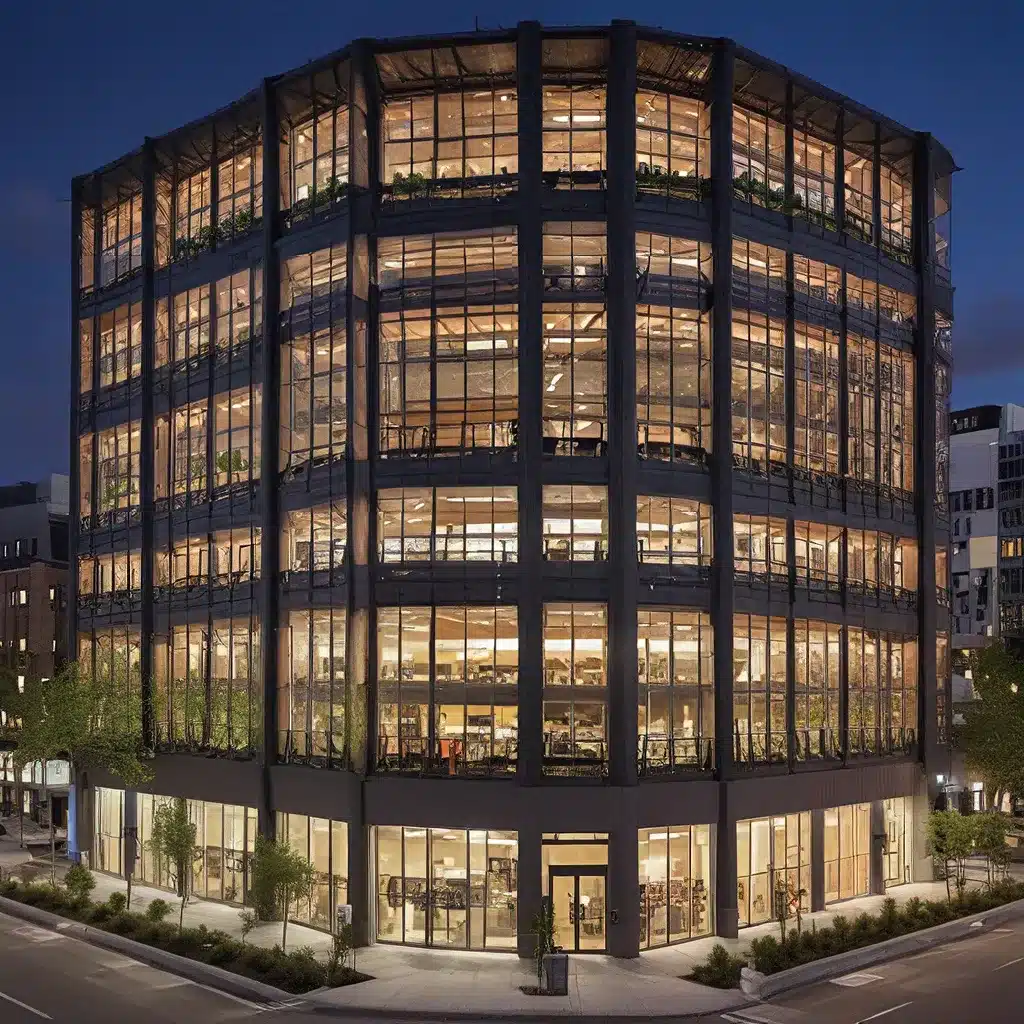
As someone who’s been immersed in the world of renewable energy solutions for years, I can attest to the immense impact that commercial buildings have on our overall energy consumption. These massive structures, with their energy-hungry systems and sprawling footprints, are responsible for a significant portion of global greenhouse gas emissions. But the good news is, there are plenty of strategies we can implement to turn the tide and make these buildings more energy-efficient.
Optimizing HVAC Systems
One of the biggest energy hogs in commercial buildings is the HVAC (Heating, Ventilation, and Air Conditioning) system. Studies show that HVAC systems account for nearly half of a building’s total energy usage. That’s a staggering statistic, but it also presents a huge opportunity for improvement.
Upgrading to Energy-Efficient Equipment: The first step is to replace outdated, inefficient HVAC equipment with ENERGY STAR-certified systems. These modern units not only consume less energy but also provide more precise temperature and humidity control, leading to improved occupant comfort.
Implementing Predictive Maintenance: Another game-changer is predictive maintenance. By using sensors and analytics to monitor the performance of HVAC components, you can identify potential issues before they become major problems. This allows you to schedule maintenance proactively, reducing energy waste and extending the lifespan of your equipment.
Optimizing Airflow and Zoning: Proper airflow management and zone-based temperature control can also contribute significantly to energy savings. By ensuring that air is distributed efficiently and that temperatures are tailored to specific areas of the building, you can avoid wasting energy on unnecessary heating or cooling.
Enhancing Building Envelopes
The building envelope – the physical separation between the interior and exterior of a structure – plays a crucial role in energy efficiency. Upgrading the envelope can make a dramatic difference in energy consumption.
Improving Insulation: Proper insulation is the foundation of an energy-efficient building envelope. Upgrading to high-performance insulation materials can significantly reduce heat transfer, keeping the building cooler in the summer and warmer in the winter.
Upgrading Windows and Doors: Windows and doors are another significant source of energy loss. Replacing old, inefficient models with energy-efficient windows and doors can greatly improve the building’s thermal performance and reduce the burden on the HVAC system.
Implementing Smart Building Automation: Integrating smart building automation systems can take energy optimization to the next level. These advanced systems can monitor and control various building systems, including HVAC, lighting, and security, to ensure optimal performance and minimize energy waste.
Harnessing Renewable Energy
While reducing energy consumption is essential, incorporating renewable energy sources can further amplify the environmental and financial benefits of commercial buildings.
Installing Solar Photovoltaic (PV) Systems: Rooftop solar PV systems are becoming increasingly popular and cost-effective. Experts estimate that solar can cover up to 75% of a commercial building’s electricity needs, significantly reducing reliance on grid-supplied power and lowering energy bills.
Exploring Geothermal Technology: Geothermal systems use the stable temperature of the earth’s subsurface to provide highly efficient heating and cooling. These systems can deliver energy savings of up to 50% compared to traditional HVAC systems, making them a powerful option for commercial buildings.
Incorporating Energy Storage: Pairing renewable energy sources with energy storage solutions, such as batteries or thermal storage, can further optimize energy use and provide backup power in the event of grid disruptions. This combination can help commercial buildings become more resilient and self-sufficient.
Engaging Occupants and Fostering a Culture of Sustainability
While technical solutions are essential, the human factor also plays a crucial role in reducing energy consumption in commercial buildings. Engaging occupants and fostering a culture of sustainability can amplify the impact of your efforts.
Implementing Occupant Engagement Programs: Studies have shown that occupant engagement programs can contribute to up to 30% in energy savings. These programs educate and empower building occupants to adopt energy-conscious behaviors, such as turning off lights and electronics when not in use, and properly using HVAC controls.
Leveraging Building Analytics and Feedback: Providing occupants with real-time feedback on energy usage and performance can encourage behavioral changes. Building analytics platforms that display energy consumption data can inspire occupants to take ownership of their energy use and contribute to the overall sustainability goals of the organization.
Fostering a Culture of Sustainability: Beyond individual actions, cultivating a culture of sustainability within the organization can have a profound impact. Firewinder’s renewable energy solutions can help you create an environment where sustainability is a core value, and employees feel empowered to contribute to the organization’s energy-efficient initiatives.
The path to reducing energy consumption in commercial buildings is multi-faceted, but the rewards are undeniable. By optimizing HVAC systems, enhancing building envelopes, harnessing renewable energy, and engaging occupants, we can transform these energy-hungry structures into shining examples of sustainable design and operation. It’s an exciting journey, and I’m eager to see how the industry continues to evolve and push the boundaries of what’s possible. Who knows what other innovative strategies may emerge in the years to come? One thing is certain: the future of commercial energy efficiency is bright, and I can’t wait to be a part of it.

